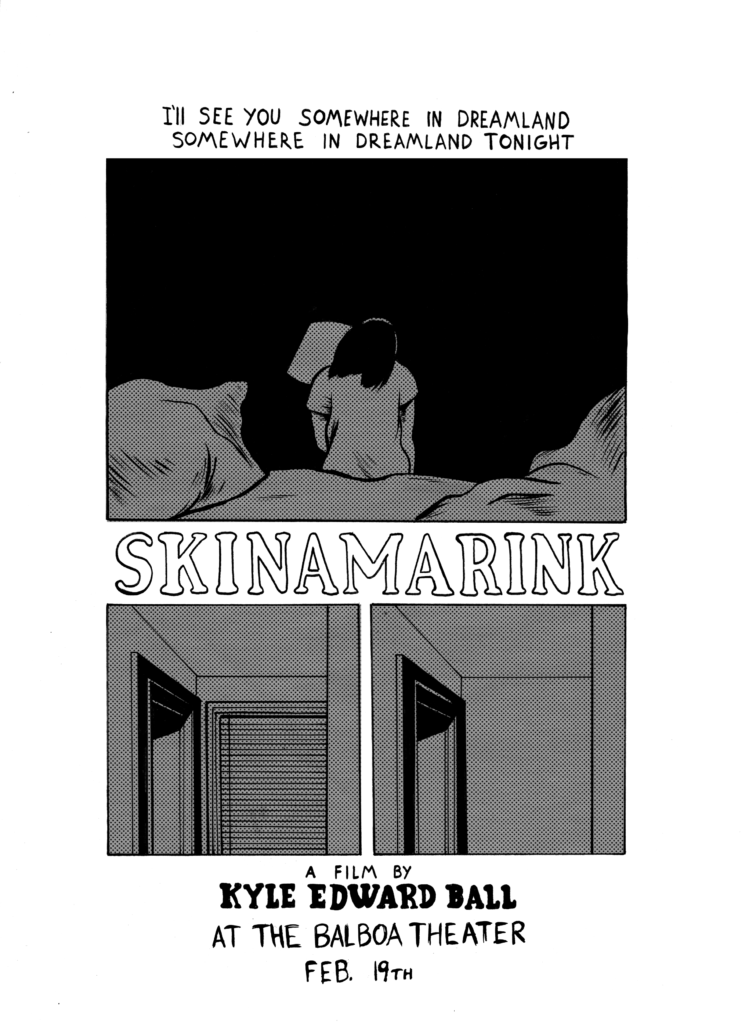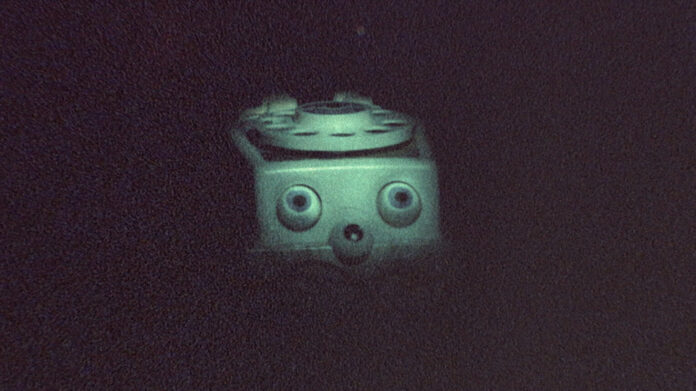Skinamarink is one of those movies that either works for you or doesn’t. Directed by a young Canadian named Kyle Edward Ball, the 2022 film has proven one of the biggest micro-budget horror phenomena since Paranormal Activity, but it plays more like an art film, with minimal dialogue and a plot that reveals itself obliquely. Anyone looking for a typical creep show may come away from the film frustrated if not infuriated, but those tapped into its wavelength may find it primordially horrifying in a way few films can match.
Among its biggest fans is Harry Nordlinger, a projectionist at the Balboa Theatre for seven years who’s worked hard to bring Skinamarink to its screen. The film plays at the Outer Richmond district theater Mon/19 at 7:30pm. Nordlinger first encountered Skinamarink through a pre-release screener copy. He had no idea the film would become the subject of such ballyhoo, but its tendrils reached deep into his brain from the first watch.
“Seeing it back then, it literally felt like [Ball] looked into my brain,” says Nordlinger. “It felt so personal, even though it’s universal.”
The film revolves around two children, Kevin and Kaylee, who wake up in the middle of the night to find that their parents are gone and the walls and windows of their home are disappearing and reappearing, along with other strange phenomena. The two play with toys and watch cartoons to assuage their fear, while cryptic shots suggest the presence of something other than the two kids in the house.
“I was a super scared kid with really bad insomnia, so I would stay up being afraid of the dark a lot,” says Nordlinger. “I would sneak out to the living room and watch old cartoons to try to keep myself not scared. Seeing that movie brought me back to those moments.”
Nordlinger is a cartoonist whose work often takes on a ghostly or macabre bent. “I’ve been trying to make comics that are about the horror of the house and the horror of doors and windows and everyday objects,” he says. “And this film did it better than I ever could.”
Nordlinger did not anticipate the film to resonate with audiences so much. To be fair, the user reviews on sites like Rotten Tomatoes and IMDB are often scathing, which Nordlinger attributes to audiences expecting to see a traditional horror film rather than a “video art piece.” Yet when the film first came to theaters in January 2024, Nordlinger found that “all these people were talking about it the same way I was.”

It feels like a small miracle that a film so abstract could find such a passionate following. It grossed $2,000,000 against a $15,000 budget, thanks in part to word-of-mouth acclaim and traction on TikTok, Twitter, and other social media.
“I think people are always more open to outsider art pieces than other people would give them credit for,” says Nordlinger, citing the popularity of surrealist director David Lynch. “Also kids are cool. Gen Z has cool taste. I’ve noticed that from programming movies here.”
Skinamarink bears aesthetic similarities to another challenging and experimental work that’s found unexpected TikTok popularity as of late: Everywhere at the End of Time, a six-and-a-half-hour album by English musician the Caretaker, on which the decay of vinyl records stands in for the decline of human cognitive functions. As the series progresses, the sounds degrade from recognizably musical to harsh and windswept, resembling fields of electrical interference by the album’s final stretch.
Everywhere at the End of Time’s fascination with the decay of physical media links in with Skinamarink’s degraded aesthetic, which suggests it was ripped from the same worn and ancient VHS tapes Kevin and Kaylee watch over and over again throughout Skinamarink.
“The Caretaker is very similar to the cartoon music that’s being warped in Skinamarink,” says Nordlinger, citing a scene where a stuck VHS tape of an animated rabbit creates a strange rhythm. “The analog horror and liminal space horror aesthetics are both really in the zeitgeist of millennials and Gen Z.”
The liminal space is a popular concept in 21st-century popular aesthetics. The places we pass through on the way to other places, like empty hallways and deserted alleys and parking lots, take on a strange and spooky magic when considered as destinations in their own right. This might not sound so scary on paper, and yet it’s central to the horror of Skinamarink, where a shot of a hallway or even a toilet can be as chilling as a ghostly face emerging from the darkness.
“I can see someone finding [Skinamarink] dull,” says Nordlinger. “People who can’t hang with an experiential piece of art, [who] want movies to be a very linear thing—if you’re not down with that, then you’re not down with the movie. For me, it’s my favorite movie of all time.”
SKINAMARINK Mon/19, 7:30pm, Balboa Theatre, SF. More info here.





